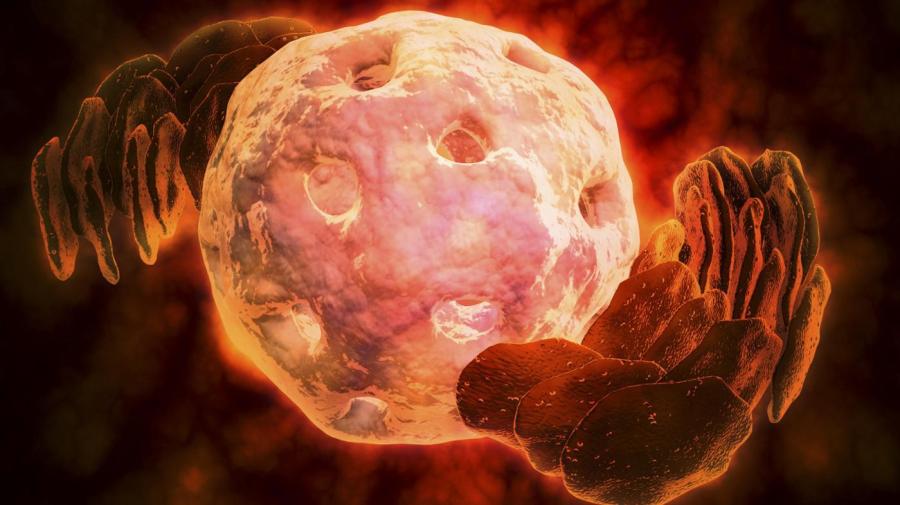What Is the Function of the Rough Endoplasmic Reticulum?

The rough endoplasmic reticulum, also called the RER, is involved with protein synthesis. The RER works by producing proteins and helping them fold properly.
The RER gets its name from a series of studded ribosomes that produce proteins. The ribosomes are located on the cytosolic side of the endoplasmic reticulum, which is also called the ER. The presence of these ribosomes on the outer layer of the RER distinguishes it from smooth endoplasmic reticulum, which is known as the SER. In addition to producing proteins, the RER plays an essential role in many other functions. It also produces lysosomal enzymes and secreted proteins, or serum proteins. These proteins are found in several main organs. They include albumin, which exists in the liver, along with insulin and other proteins that are located in glands.
Structure of the RER
The RER has a binding site for ribosomes, which is called the translocon. Although ribosomes bind to the translocon, they do so only temporarily as they are regularly released from the membrane. A ribosome binds to the RER when a protein-nucleic acid forms in the cytosol, which is another cell component. Protein is processed in the ER lumen by a peptidase enzyme, which removes the original signal peptide. At this point, ribosomes may return to the cytosol. Occasionally they stay with the translocons.
Facts About SER
There are situations when cells have transition areas between the RER and the SER. Within this area are exit sites, where transport components with lipids and proteins produced in the ER break off and head to the Golgi apparatus. Although SER exists alongside RER, it performs different functions. A distinguishing feature between the two types is that SER does not contain ribosomes. This means that it has a flatter appearance and does not carry out protein synthesis. One of the main roles of the SER is the biosynthesis of phospholipids. The SER also synthesizes and repairs membranes. Some types of SER perform duties specific to the organs that they are located in. In the liver, for example, the SER helps to break down drugs, alcohol and metabolic waste products. In muscle tissue, the SER is called the sarcoplasmic reticulum. Its main function in muscles is to make calcium ions that are necessary for muscle function and regulate their release. The SER is smooth and slippery due to the presence of fats and steroids.
Although RER and SER perform different functions, they have a similar structure. They appear as a network of interconnected tube-like structures and membrane-enclosed sacs. A single membrane connects these sacs and tubes so that they share a large, common and complex internal space called the lumen, which is sometimes referred to as cisternal space. The lumen comprises about 10 percent of the cell’s volume. The ER membrane plays a key role in allowing certain molecules to move back and forth between the cytoplasm and the lumen. In addition to transferring molecules, the ER works with the nucleus to share vital information. ER are found in plant and animal cells.





